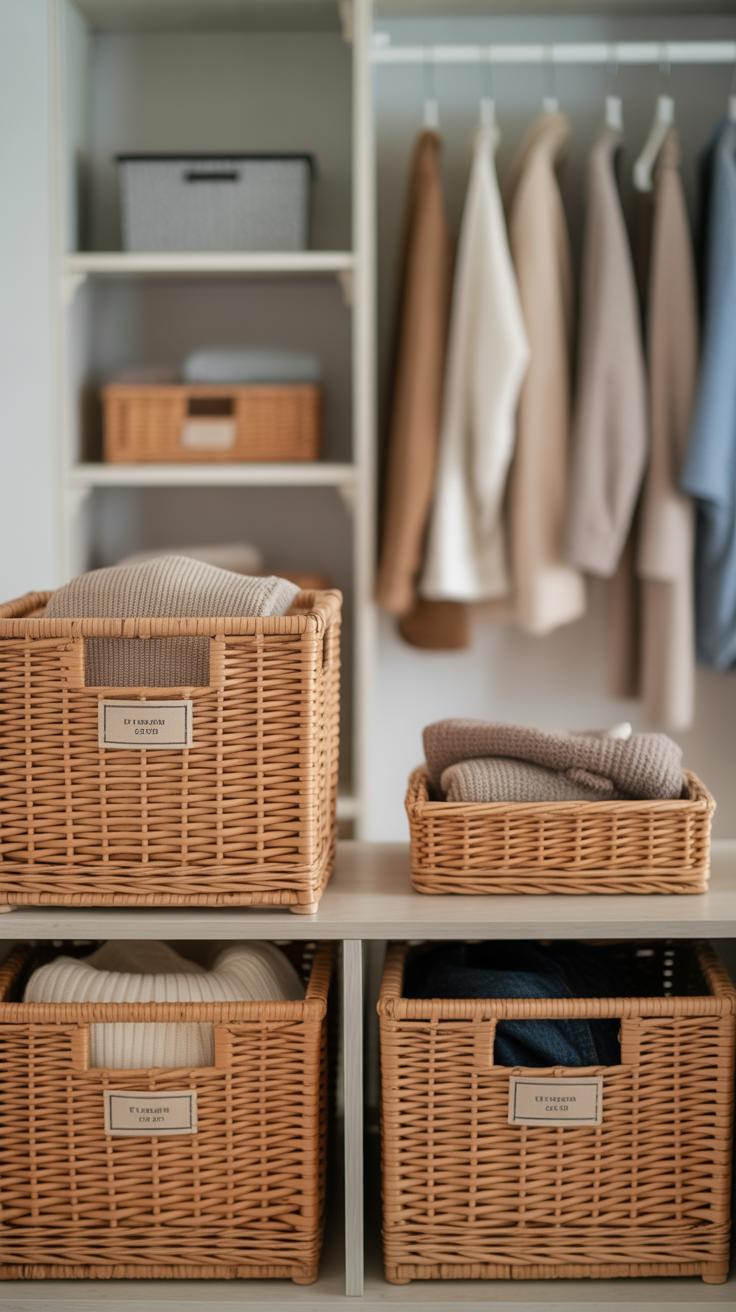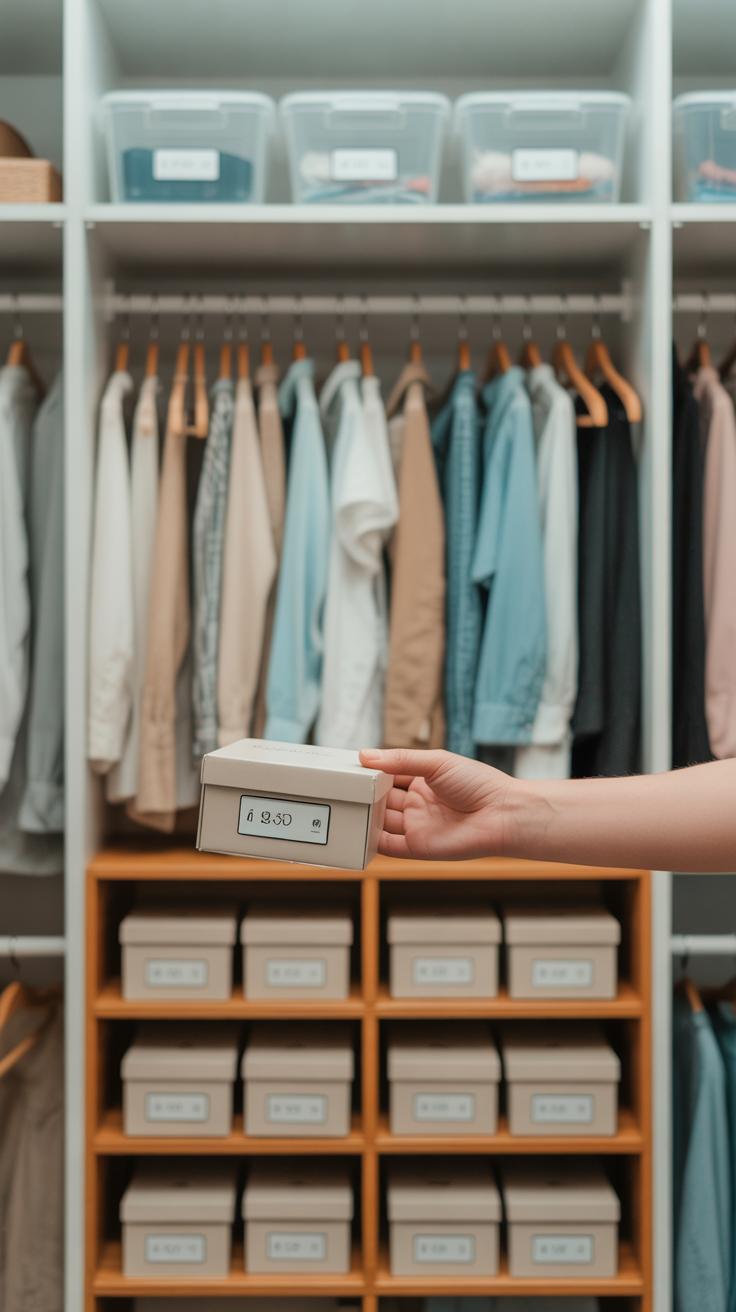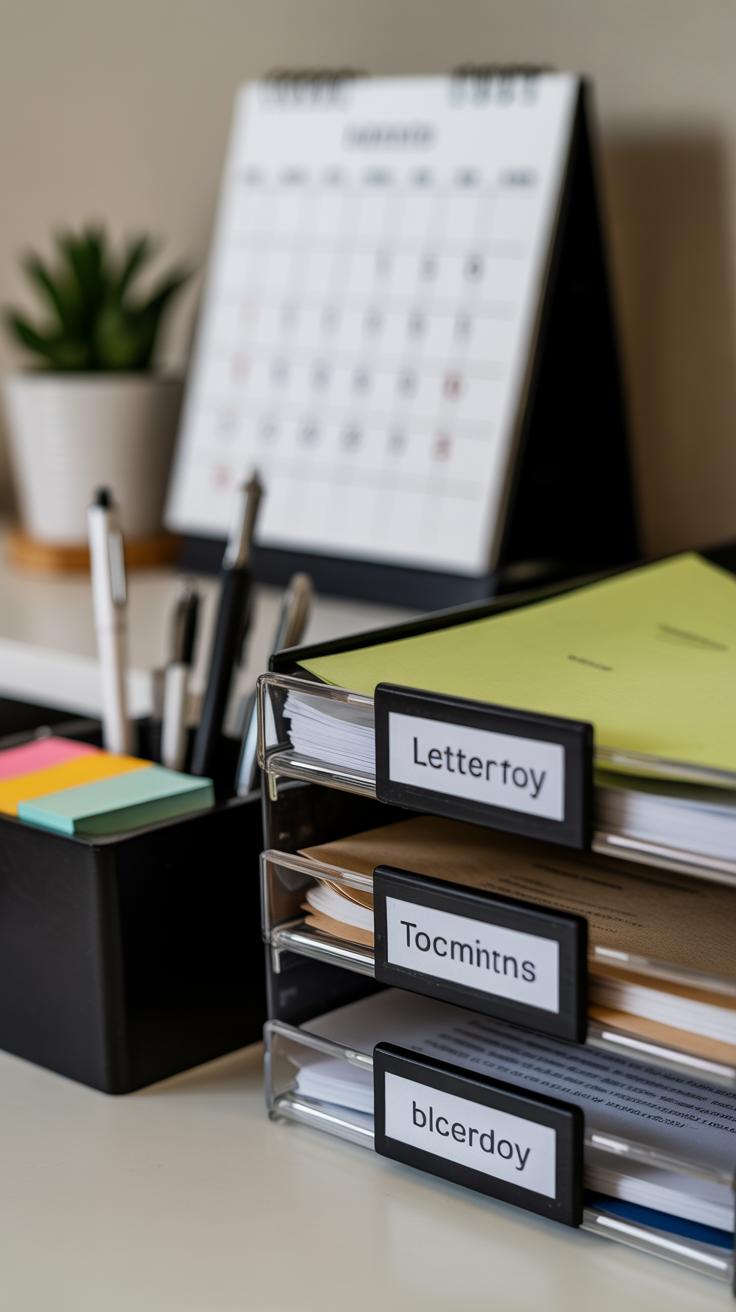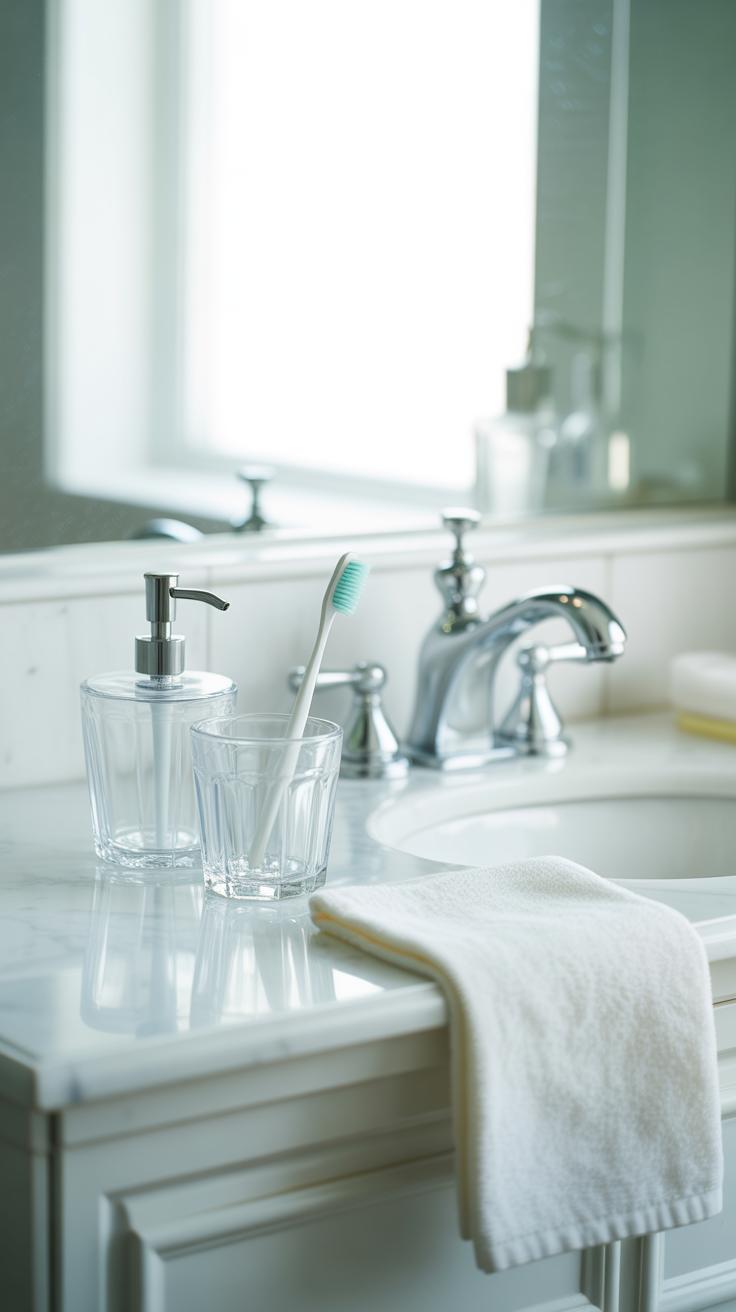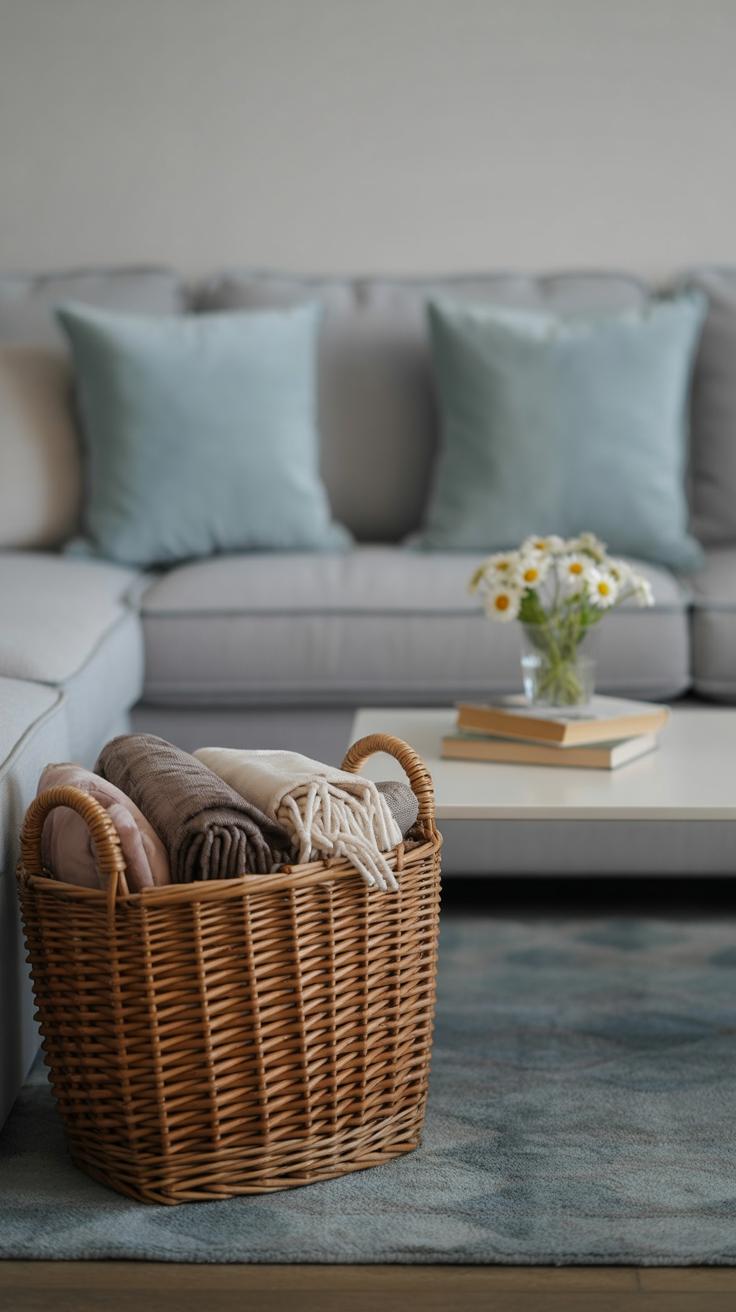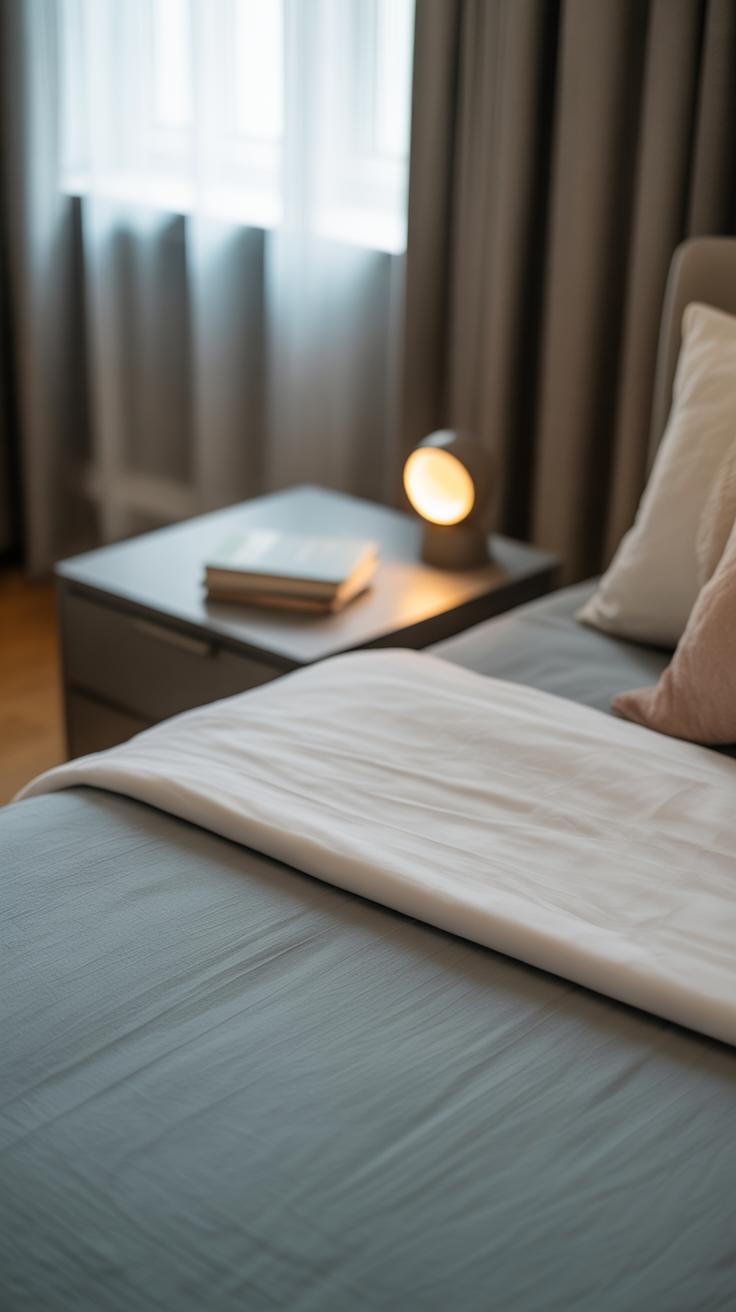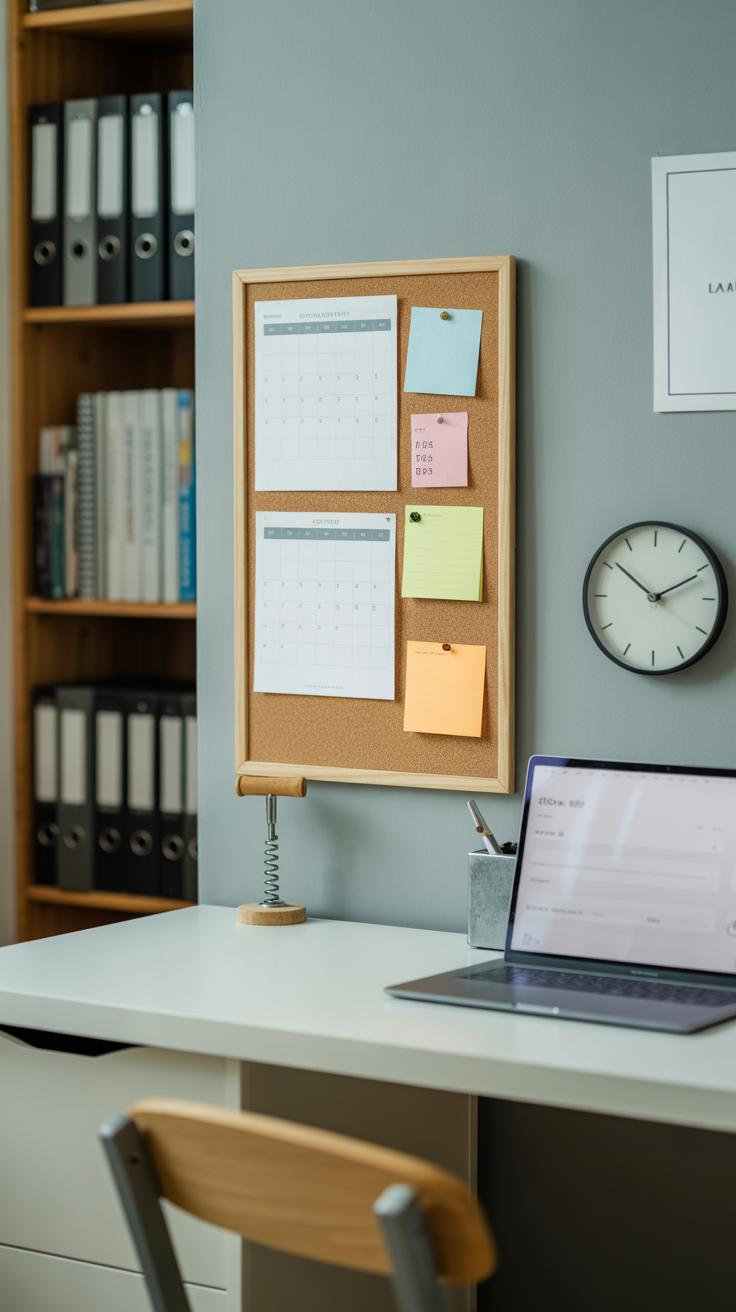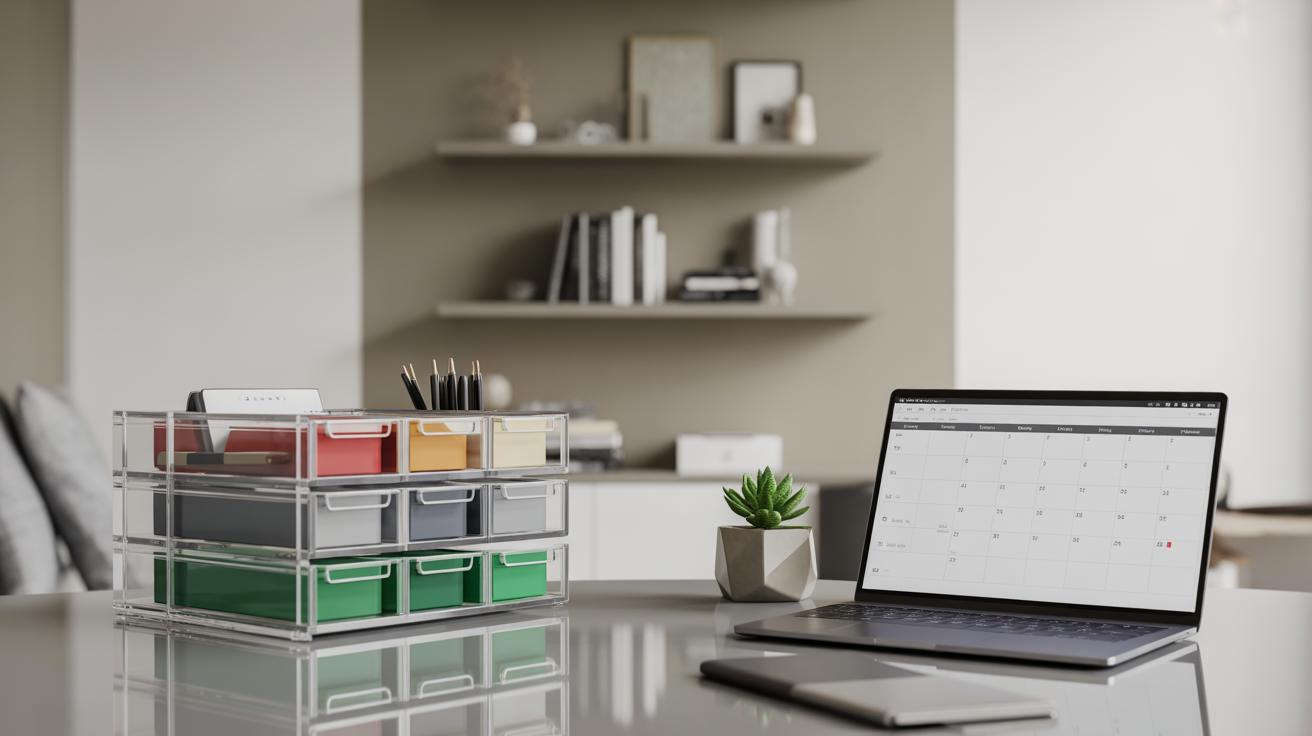
Must Try Organizing Hacks For Every Room
Introduction
Keeping your home organized can make living more comfortable and stress-free. Must Try Organizing Hacks For Every Room will help you find ways to sort your space effectively. Whether it’s your kitchen, bathroom, bedroom or living room, good organization makes a big difference.
This article shares simple organizing tricks that you can try yourself. Each room has special needs, and these hacks are designed to match those needs. You will find helpful ideas that save time and space while reducing clutter in your home.
Start with Decluttering First
Decluttering is the very first step before you even think about organizing a room. It’s tempting to jump straight to finding storage solutions, but if your space is filled with things you don’t actually need, no organizer or box will really help. You end up saving clutter, just in a neater way. Imagine trying to organize a closet packed with clothes that don’t fit or you never wear. You’ll create chaos, not calm.
To keep it simple, sort items quickly into three piles: keep, donate, and toss. Ask yourself: Have I used this in the last year? Does it bring me joy or have a purpose? Could someone else benefit from it more than me? If the answer is no to all, it’s time to part ways. I remember once setting a 15-minute timer and being surprised at how much I could clear out just by sticking to the limits.
It’s normal to hesitate—sometimes it feels wasteful to let go of things that “might” be useful someday. But holding on usually means wasted space and confusion. For example, when your kitchen counters are crowded with gadgets you rarely touch, it’s harder to find what you really need. Decluttering clears the way for clear storage and easier living.
Try sorting like this:
- Pick a spot in the room to gather items.
- Grab three boxes or bags, label them “Keep,” “Donate,” and “Trash.”
- Hold each item, ask the key questions. If you pause too long, that’s usually a sign you don’t need it.
- Don’t overthink—go with your gut on items you’re unsure about. You can always revisit later.
Once decluttered, organizing becomes more manageable. You avoid wasting precious storage space on things that only add to the mess. It’s not just about tidiness; it’s about clarity too.
Use Storage Bins and Boxes Wisely
Choosing the Right Containers
Picking the right storage bins isn’t just about color or style—it really depends on what you’re storing and where. For instance, bulky sweaters might need larger, sturdier boxes that won’t collapse under their weight. On the other hand, tiny craft supplies fit better in small divided containers. You might think any bin will do, but size and shape matter more than you’d expect.
Also, think about where the bins will live. In a bathroom or basement, humidity might cause plastic boxes to degrade or trap moisture, so breathable fabric containers or clear, sealable boxes could be better options. In dry rooms like a study, airtight containers help keep dust away. This varies a lot depending on your home environment—and sometimes you’ll learn by trial and error.
Another thing: stacking bins saves space, but not if the containers are flimsy and get crushed. Heavy items belong in bins with solid sides and bottoms, while lighter things like papers or wrapping materials can ride in thinner boxes. Choose wisely. It’s worth taking a little extra time to figure out the right fit instead of just grabbing whatever box is nearby.
Labeling for Easy Access
Labels are a game-changer. Without them, those neat stacks are just mystery boxes nobody dares to open. Simple labels like sticky notes or printable tags help you spot what’s inside at a glance. You might prefer handwritten labels for flexibility, or typed ones for tidiness—either way, the key is consistency.
Color coding can also help, especially if you have many bins in one place. For example, use blue labels for office supplies and green for kitchen tools. This tiny extra step saves minutes every day—and prevents frustration down the line when you need something quickly.
Sometimes, labeling slows you down, especially if you want to dig through something quickly. But in my experience, those few seconds spent upfront prevent hours wasted looking for things later. To keep it simple, just label the outside clearly rather than detailing every little thing inside; it’s good enough to stop clutter from creeping back. Do you usually bother labeling your boxes? Or does it feel like added work?
Maximize Closet Space
Using Shelves and Hooks
Closets often have quite a bit of vertical space that’s left unused. Installing shelves can help you place folded clothes, bags, or storage boxes at different heights. You don’t need to cover every inch — sometimes just one or two well-placed shelves can change how you see your closet. Hooks are surprisingly handy too. Mount them on the side walls or the back of the door for scarves, belts, hats, or jewelry. They help you keep things visible without cluttering shelves or hangers. I once added a few hooks inside my closet door, and suddenly my accessories stopped getting lost at the bottom of drawers.
Store Seasonally for a Cleaner Closet
Rotating your clothes by season can really clear space, but it takes a little effort to get used to. When winter’s over, I pack heavy coats and boots away in labeled bins or vacuum-sealed bags. Store them on the highest shelf or under the bed. Then, your spring and summer items have room to breathe. This trick not only frees up hangers but also helps you focus on what you actually wear regularly. Sometimes I wonder if it’s worth the trouble, but when your closet opens without a pile of out-of-season stuff tumbling down, you sort of realize it is.
Organize Your Kitchen for Efficiency
Smart Drawer and Shelf Use
Kitchen drawers and shelves can get chaotic fast, but using dividers and risers helps keep things clear. Drawer dividers let you separate utensils, making spoons, knives, and spatulas easy to grab without fishing around. You might find it handy to assign a divider for cooking tools and one for everyday cutlery—small efforts really add up.
Shelf risers create extra space vertically, so you can stack plates or mugs without crushing the ones below. These risers make grabbing things quicker, as you can see what’s there at a glance. I’ve often underestimated how much this little trick saves time during busy mornings.
Pantry Organization Ideas
Pantries tend to become black holes where cans and snacks disappear. Grouping similar foods together can prevent this. For example, keep all baking supplies like flour, sugar, and mixes in one spot; snacks like chips and granola bars in another. Clear containers with labels can show what you have and avoid duplicates—or getting to the back and realizing the expired cans lurking there.
Using wire racks or tiered shelves keeps cans visible and easy to reach. Stack snacks in baskets to avoid the usual pile-up chaos. Think about what you use most and place those items where you can get to them easily. Are cans always needing a nudge or snacks constantly spilling out? Try switching their spots around until it feels natural—you’ll know when it clicks.
Create a System for Paperwork
Paperwork piles up fast, doesn’t it? One day it’s just a few bills, the next it’s a mountain of mail and random receipts. To keep your space feeling less chaotic, try setting up a simple system using folders, trays, or even a filing cabinet if you have the room. Pick what works for you, but what matters more is having distinct places to put things right away.
Labeling is key. Think about categories like “Bills,” “Receipts,” “Insurance,” or maybe “School Papers” if you have kids. You can get a bit creative or keep it straightforward—whatever nudges you to file instantly. Color-coded folders or trays can help too, especially when you’re in a rush and don’t want to think too much.
What helps me avoid letting paperwork pile up is little habits. Set aside a few minutes weekly—say Sunday evening? Sort what came in, toss what you don’t need, and file what you do. It’s a tiny routine, but skipping it even once seems to snowball quickly. If weekly feels too much, try every two weeks. You might not get it perfect, but something regular makes a difference.
Keep Your Bathroom Neat
Bathrooms, especially small ones, can quickly feel cramped and messy if you’re not careful. One way to keep things tidy is by using every nook—think under the sink and vertical wall space. Installing narrow shelves or stacking clear bins below can hold extra toiletries and cleaning supplies. You might be surprised how much fits down there once you start organizing by type or frequency of use.
Walls are often overlooked. Small floating shelves or hooks can free up significant counter and drawer space. Towels, for example, can hang neatly on hooks or bars rather than folding into a pile. You might want to reserve the counter for just daily-use essentials: a soap dispenser, toothbrush holder, maybe a face wash. Everything else belongs tucked away.
It’s easy to forget about limiting what stays on the counter. I’ve noticed that when too many bottles and jars linger there, the space feels chaotic. So, keeping only the basics out—not all the products you own—makes a big difference. Consider drawer dividers or small baskets inside cabinets to group together hair care items or makeup rather than scattering them.
Do you find yourself opening the cabinet under the sink and seeing a jumble of stuff? That’s common. But, if you use stackable bins and label them, it changes how you interact with that space. One bin for cleaning sprays, another for extra toothpaste and floss…it’s almost like a small pantry. I guess it takes a little patience at first, but it pays off when you don’t dread opening those cabinet doors.
Organize Your Living Room for Relaxation
You might find the living room quickly becomes a catch-all space for books, electronics, or toys—and it’s easy to feel overwhelmed. But keeping these items orderly doesn’t have to be complicated. Baskets and bins, for example, do more than just hide clutter. They actually make things easier to find when you’re looking for them. I remember once stashing my kids’ toys in a large wicker basket near the couch; it kept the space tidy but still felt casual, like things belonged there rather than being shoved away.
Think about choosing baskets with handles or labels. This way, everyone in the household can help put things away without confusion.
Storage Baskets and Bins
Baskets and bins come in handy for loose items like remote controls, chargers, and magazines. They’re great because:
- You can fit them under the coffee table or beside the sofa, keeping things within reach but out of sight.
- Soft or woven materials make them less “office” and more “home.”
- Using multiple bins helps sort items—like one for books, one for toys, and one for tech accessories.
But remember, they’re not a perfect fix. Overstuffing a basket just shifts the mess. Sometimes, you have to be a bit ruthless and pare down.
Shelving Solutions
Shelves aren’t only for showing off collections or décor. They work well to organize without cramming everything into drawers. Open shelves can hold your favorite books, framed photos, or even a small basket with chargers or cords. It keeps your items visible but not scattered. I’ve found that a well-curated shelf invites you to enjoy what’s on it, instead of feeling like clutter.
Wall-mounted shelves save floor space, which is helpful when the living room isn’t huge. You might wonder—how many shelves is too many? That depends on what you want to keep close. It’s okay to experiment and pull some things down if it starts to feel busy.
Sometimes, mixing closed and open shelving works best, especially if you want to hide less attractive items while still displaying favorites. A cabinet with doors combined with open shelf above can be a quiet lifesaver for the living room’s visual calm.
Make Your Bedroom a Restful Space
Clothes and Shoe Storage
Keeping clothes and shoes organized in your bedroom can really change the vibe. Instead of dumping everything in drawers or piles, try folding clothes with a method that gives each item its own space. Folding t-shirts and sweaters vertically lets you see everything at a glance, which I find surprisingly freeing. Hanging clothes? Use slim, uniform hangers to save space and prevent slipping. If your closet feels cramped, think about switching seasonal items to storage bins under your bed or higher shelves.
Shoe storage is often overlooked but can get messy fast. Clear boxes or stackable bins help you see pairs without digging through shoes. Another option is using an over-the-door rack or low shelving, depending on space and shoe types. Whatever you choose, keeping shoes visible prevents that frustrating search when you’re in a hurry.
Keep Nightstands Clutter Free
Nightstands can easily become catch-alls for things you don’t really need at arm’s reach. Try to limit what you keep there. Typically, a book, a lamp, and maybe a small tray for your watch or ring are enough. If you use your phone as an alarm, also consider a charging dock to keep cords neat.
Drawers or small baskets inside the nightstand can hold items like lip balm, medications, or earbuds—things that shouldn’t be out in the open but you want handy. The key is to regularly clear what you don’t use; I sometimes forget what piles up but a quick daily tidy makes a big difference. A calm nightstand equals a calm mind, or so I hope!
Create a Command Center
Setting up a command center in your home can really change how your family stays organized. Think of it as a designated spot where keys, calendars, to-do lists, and mail all come together—no more frantic searches before leaving the house. You might wonder if it’s really necessary, but having one place to check schedules or drop notes cuts down on confusion, especially when everyone’s juggling different activities.
Choosing the Right Spot
Location matters, and often the best place is near the front door or in the kitchen. These spots work because you pass through them frequently, so glancing at the calendar or grabbing your keys becomes second nature. Near the door makes sense for last-minute grab-and-go items, while the kitchen might feel more central since people spend so much time there. Maybe try both and see what fits your routine better—you could be surprised.
Tools for Your Command Center
To keep things neat, equip your command center with a few essentials:
- Hooks for keys and bags, so they don’t get lost in the shuffle
- A bulletin or cork board for calendars, reminders, and important papers
- Containers or trays for small items like sunglasses, pens, or mail
- A whiteboard or chalkboard for quick to-do lists or messages
- A small shelf or cubby for incoming and outgoing paperwork
Having these tools in one spot means less clutter floating around the house, but don’t overdo it—a cluttered command center defeats the purpose. Simple is usually best.
When everyone knows where to find daily essentials or leave reminders, it reduces last-minute scrambles and missed appointments. Maybe it won’t solve every chaos, but it’s a step worth trying. How could your morning routine change if you stopped hunting for your keys every day?
Maintain Your Organization Habits
Keeping your home organized takes more than setting up a system—it needs daily attention. Try a quick tidy-up each evening: put away stray clothes, return books to shelves, or clear countertops. These small tasks stop clutter from piling up and make mornings less stressful. It might feel tedious at times, but a five-minute cleanup can save you from an overwhelming mess later.
Once a week, dedicate a little time to review your spaces. Walk through clutter-prone areas like the kitchen counters, your desk, or entryway. Ask yourself if something feels out of place or if certain items could be stored better. Sometimes just shifting things around can make a big difference. If something isn’t working, be willing to change it up—you don’t have to stick rigidly to the same setup.
You may find these routines surprisingly doable, or maybe tricky at first. The point is to build a habit that fits your rhythm, not to strive for perfection. Even on busy days, a quick mental check about where clutter sneaks in can help keep you on track. It’s less about a spotless home every moment and more about steady progress in keeping familiar spaces manageable.
Conclusions
Using Must Try Organizing Hacks For Every Room helps you create a home that feels calm and easy to manage. Thinking about how each room is used and what you need there makes organizing easier to keep up. When you apply these simple tricks, your daily tasks can take less time and effort.
Try these organizing hacks step by step and see what works for you. When your space is neat and items are easy to find, your home will be more enjoyable. Start organizing today and enjoy the many benefits a clean and tidy home brings.



